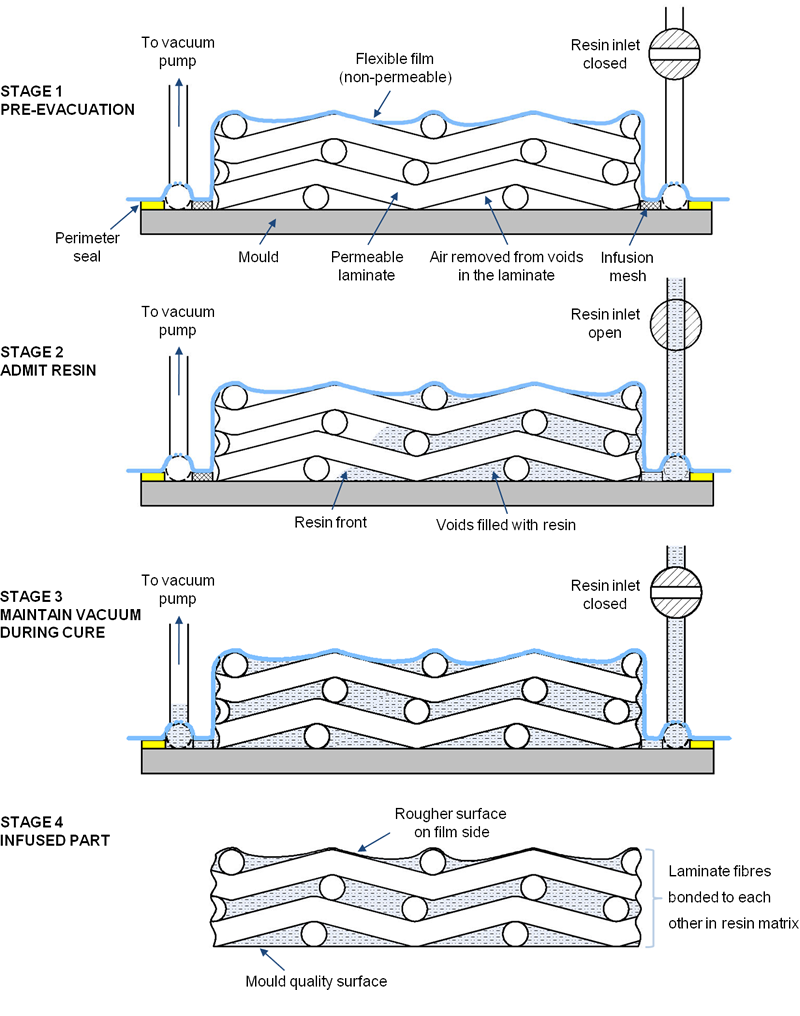What is Vacuum Infusion Process (or resin infusion process)?
Resin Vacuum Infusion, Process for Manufacturing High Performance Composite Parts
Resin vacuum infusion is a cost effective process for making high quality fiberglass and composite parts. For many applications, parts manufactured using the resin vacuum infusion process have higher quality, better consistency, higher glass content, higher specific strength, higher specific stiffness, better interior finish, faster cycle time and lower cost compared to the open mold process.
Vacuum Infusion Process
Any composite or fiberglass part that is made using the open mold process can be vacuum infused (refer to the Fiberglass Design Guide for more information on the open mold process). Standard fiberglass molds will work for the process if the molds have vacuum integrity (no cracks) and have enough flange width to seal the vacuum bag. The part is typically gel coated in the mold similar to the open mold process. Then the dry reinforcements (fiberglass, carbon, Kevlar etc), core (balsa, or foam), and ribs are precut and placed on to the mold dry. After the materials have been loaded, a vacuum bag or an inner mold is placed over the material and sealed against the mold. High vacuum (25 in Hg or more) is used to evacuate the air from the part and resin (polyester, vinyl ester or epoxy) is pulled into the part by the vacuum pump. The process is very simple in concept; however, it requires detailed planning and design so the parts can be infused in a reasonable amount of time without any dry spots. The rate of infusion depends on the viscosity of the resin, the distance the resin has to flow, the permeability of the media, and the amount of vacuum. Therefore, the choice of materials, flow media, resin flow layout, and location of vacuum ports are critical in making good parts.

Advantages of Vacuum Infused Parts:
- The quality of the process is not dependent on the skill of the operator. Once the process has been designed, part quality will be consistent.
- The laminate quality will be higher than parts made with the open mold process. There will not be any entrapped air; the laminate will be perfectly consolidated and the wall thickness will be consistent.
- Minimal part shrinkage and distortion.
- Infused laminates will have glass content by weight ranging from 35% to 50% compared with 25% to 35% for chopper gun laminated parts. The parts will have higher specific strength and specific stiffness.
- Complex parts with ribs, core, and brackets can be made all together in one step eliminating secondary bonding operations.
- The part can be made net size thus reducing post-finishing time.
- The non-molded side of the part can have a good finish if an inner mold is used.
- Faster cycle time. Cycle times of 2-3 hours are typical so a mold can be turned 3-4 times per shift.
- No air pollution from volatile organic compounds.